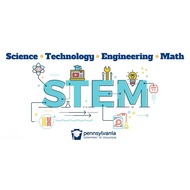
(View Complete Item Description)
Unit Summary
This unit on metabolic reactions in the human body starts out with students exploring a real case study of a middle-school girl named M’Kenna, who reported some alarming symptoms to her doctor. Her symptoms included an inability to concentrate, headaches, stomach issues when she eats, and a lack of energy for everyday activities and sports that she used to play regularly. She also reported noticeable weight loss over the past few months, in spite of consuming what appeared to be a healthy diet. Her case sparks questions and ideas for investigations around trying to figure out which pathways and processes in M’Kenna’s body might be functioning differently than a healthy system and why.
Students investigate data specific to M’Kenna’s case in the form of doctor’s notes, endoscopy images and reports, growth charts, and micrographs. They also draw from their results from laboratory experiments on the chemical changes involving the processing of food and from digital interactives to explore how food is transported, transformed, stored, and used across different body systems in all people. Through this work of figuring out what is causing M’Kenna’s symptoms, the class discovers what happens to the food we eat after it enters our bodies and how M’Kenna’s different symptoms are connected.
This unit builds towards the following NGSS Performance Expectations (PEs) as described in the OpenSciEd Scope & Sequence: MS-LS1-3, MS-LS1-5, MS-LS1-7, MS-PS1-1, MS-PS1-2. The OpenSciEd units are designed for hands-on learning, and therefore materials are necessary to teach the unit. These materials can be purchased as science kits or assembled using the kit material list.
Additional Unit InformationNext Generation Science Standards Addressed in this UnitPerformance ExpectationsThis unit builds toward the following NGSS Performance Expectations (PEs):
Material Type:
Activity/Lab,
Lesson,
Module


















